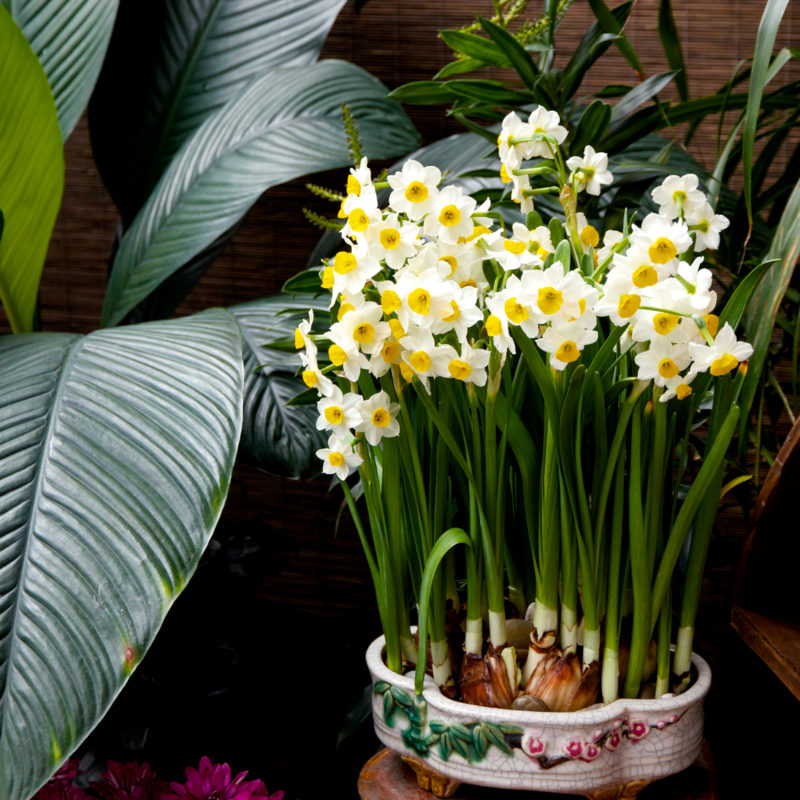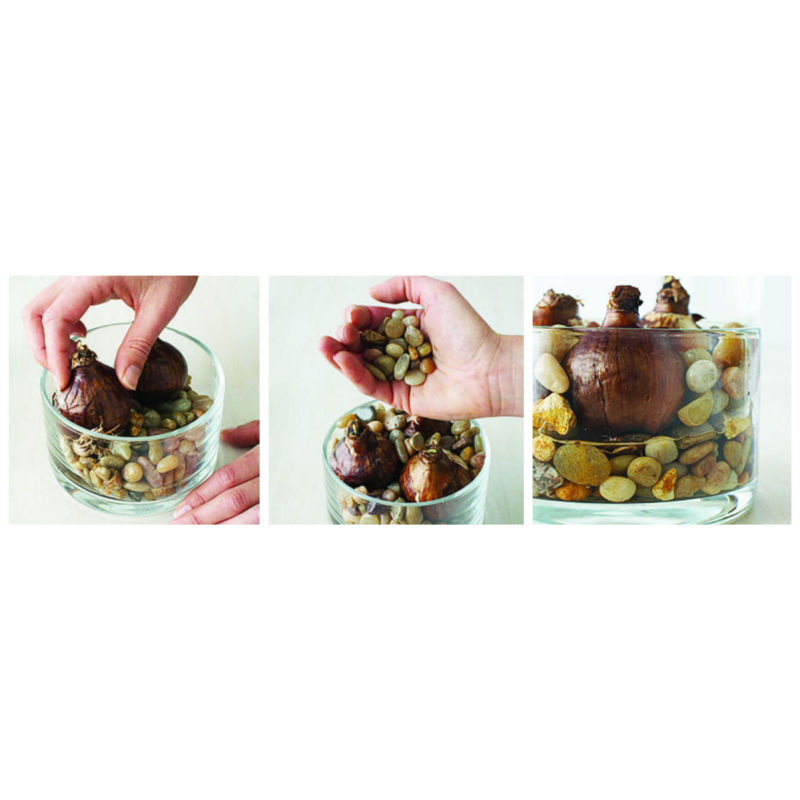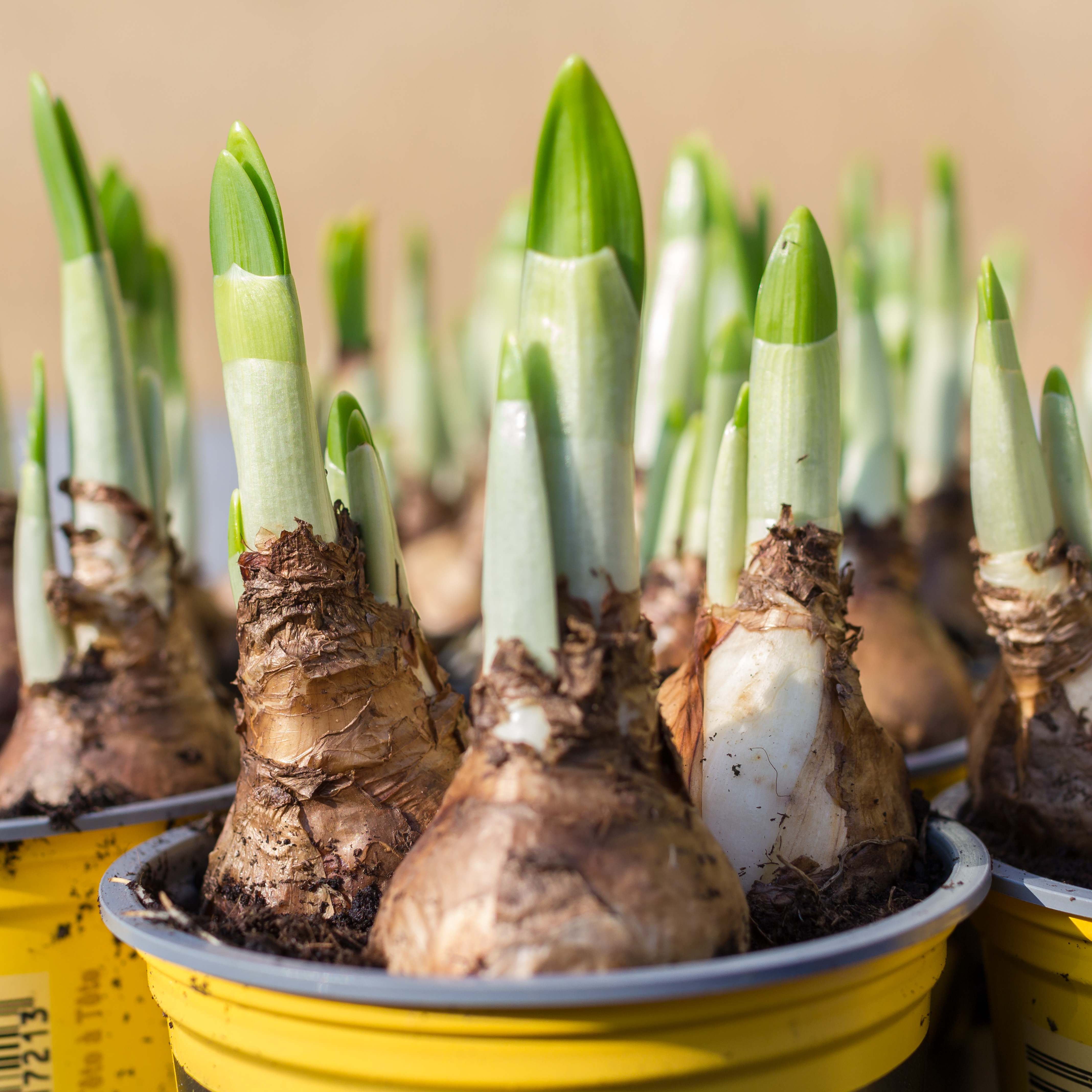
The Gentle Art of Forcing Bulbs
Coax bulbs to flower indoors during winter, and say hello to an early spring

LZalesski / Getty Images
In the dead of winter, spring-blooming bulbs are especially welcome in the house. They can easily fill a room with a delightful perfume and remind you that spring really is just around the corner. Best of all, you don’t have to wait until the first flush of spring to enjoy these blooms indoors — you can literally force Mother Nature’s hand. The process is called forcing, but it’s really not that pushy; you’re basically just tricking the bulbs into thinking they’ve been through winter, then waking them up early from within the comfort of your own home. Depending on the kind of bulbs you choose, you could enjoy your first blooms in less than 10 weeks.
You can find the bulbs listed here at most nurseries and garden centers, online, or through mail-order catalogs. Note that many bulbs require a certain amount of chilling; some need to be refrigerated, others can be planted then chilled outdoors (see Forcing tips). Chilling periods given below are based on the recommendations of the Netherlands Flower Bulb Information Center.

Photo by Ellen von Bodegom / Getty Images
Crocus, Hyacinth, Grape-Hyacinth, and Iris
These bulbs must be chilled. They can be forced, one bulb per jar or vase, in water alone without any soil; there are special forcing jars and vases for crocus and hyacinths, but a wide container with gravel (and dense planting) will also yield lovely results.
Crocus corms need to be refrigerated for 15 weeks. After chilling, place each corm in its own water-filled crocus forcing jar or vase at around 60°; flowers will emerge in about two weeks. Choose Crocus vernus in shades of purple, lavender, yellow, or white.
Hyacinth bulbs need to be refrigerated for 12 weeks. Then place each bulb in a water-filled hyacinth forcing jar or vase at around 70°; flowers follow in two or three weeks. Try fragrant Dutch hyacinths in shades of blue, purple, pink, or white.
https://www.instagram.com/p/BwAMSz4Hntv/?utm_source=ig_web_button_share_sheetBulbous Iris require about 15 weeks to chill, then force these bulbs in a vase of water. Expect blooms two to three weeks later. We love the clear, cobalt-blue Iris reticulata ‘Harmony’ and the black and white-detailed fall on ‘Purple Gem.’
Grape-hyacinth bulbs need 8-12 weeks’ chill time; plant as you would crocus, and expect faintly fragrant blooms in blue, purple, or white two or three weeks later.
Freesia and Tazetta Narcissus (Paperwhites)

Silas Yeung / Getty Images
Forcing these bulbs technically doesn’t require cold stratification, but they do need cool night temperatures and plenty of time to root before they’ll flower. They’re powerfully fragrant.
Freesia corms take about 14 weeks from planting to bloom. Plant corms in a container filled with potting soil or sand, growing them in a spot that has daytime sun and nighttime temperatures in the 40s. Look for Dutch and Tecolote hybrids in shades of purple, blue, lavender, red, pink, orange, yellow, or white
Tazetta narcissus bulbs take five to seven weeks from planting to bloom. Use any type of container that’s twice as wide as it is high. Bulbs can be completely buried in potting soil or partially sunk in horticultural sand or decorative rocks or pebbles. Whatever medium you use, water well and put the container in a cool place (40° to 50° at night is perfect) until buds show color, then bring them indoors to bloom.

Many of these narcissus fall under the generic heading of “paperwhite,” and all produce lots of flowers from each bud. Among the best for forcing are Narcissus tazetta ‘Orientalis’ (light yellow segments, deep yellow cup), ‘Paper White’ (all white), ‘Grand Soleil d’Or’ (golden yellow), and an Israeli-bred series that includes ‘Galilee’ (white), ‘Nazareth’ (also sold as ‘Yael’; pale yellow segments, deep yellow cups), and ‘Ziva’ (white).
Daffodils and Tulips
https://www.instagram.com/p/B4G9hqFFbdo/?utm_source=ig_web_button_share_sheetDaffodil bulbs need chilling for 16 weeks; bloom follows two or three weeks later. Try the strong-growing ‘Salome’ (pale yellow segments, apricot pink cup), the diminutive ‘Tête à Tête’ (all yellow), or ‘Mount Hood’ (all white).
Tulip bulbs need chilling for 14 to 20 weeks; bloom follows about three weeks later. Choices range from low-growing species tulips to tall hybrids. Two of our favorites for forcing are red T. greigii (try ‘Orange Toronto’) and T. kaufmanniana, whose water lily-shaped flowers come in yellow or red (‘Showwinner’ is a superior red). Each holds its flowers about a foot high.
Forcing tips

Chilling. To cold-stratify bulbs in the refrigerator, just store them in a mesh or paper bag in the crisper section until they’re ready to be forced. Throughout much of the West (except mild-winter parts of Arizona and Southern California), you can chill bulbs after planting simply by putting the pots outdoors. In very cold regions, place them in your garage, greenhouse, or cold frame; in milder places, you can put them in a cool, bright part of the garden. Bulbs will root and sprout during chilling.
Containers. Shop for containers and special forcing jars and vases at garden centers and through mail-order catalogs. Tall glass vessels, like a hurricane-lamp chimney or the vase holding the tulips pictured above, do a good job of supporting spindly or extra tall flower stems; you can also buy wire supports that keep stalks from leaning.
Planting. Most bulbs and corms can be put into containers almost shoulder-to-shoulder–certainly not more than 1 inch apart. Plant so that most of the bulb is buried, with just the tip poking above the potting medium. The level of the soil or sand should start out an inch below the container rim. As the bulbs start to grow, they’ll push the soil or sand up and you’ll be glad you allowed for that expansion. If you grow bulbs in soil, fertilize once with half-strength liquid fertilizer as soon as you bring them indoors.
